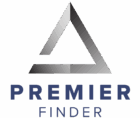
You’ve got the experience. You’ve done the work. And now you’re in the interview seat, ready to talk about it. But here’s the catch: expertise doesn’t land unless it’s communicated clearly.
At Premier Finder, we’ve coached hundreds of candidates through interviews where their knowledge was strong, but their delivery missed the mark. The result? A missed opportunity. Because it’s not just about what you know, it’s about how you communicate it.
Here’s how to make sure your expertise lands with your audience.
Start by Reading the Room
You don’t need to explain every detail to prove you’re qualified. The key is anchoring your answers in what the interviewer actually cares about. That requires understanding the role and its challenges, tailoring your stories accordingly, and paying attention to the interviewer’s cues. Are they nodding, taking notes, leaning in… or glazing over?
If you’re unsure how much to share, make it collaborative:
“Would it be helpful if I go deeper into any part of that?”
This question not only keeps you aligned but also shows emotional intelligence, a soft skill every leader values.
Structure Your Stories with STAR
We’ve said it before, and it’s worth repeating: the STAR method works.
-
Situation: Set the context
-
Task: Clarify your role
-
Action: Explain what you did
-
Result: Share the outcome
When you stay grounded in this structure, your answers become easier to follow, and easier to remember. Unstructured storytelling may showcase your effort, but it often leaves your interviewer confused. STAR ensures they walk away knowing exactly what you did and why it mattered.
Lead with Headlines, Not Monologues
Long-winded intros lose attention fast. Start your response with a headline that summarizes the impact, then explain how you got there.
Instead of saying:
“So back in 2019, we were rolling out a new ERP system…”
Try:
“I led an ERP implementation that improved workflow speed by 25%. Here’s how.”
That kind of opening gets attention. Then your story delivers the proof.
60 Seconds or Less
A good rule of thumb: aim to keep your answers under one minute. If the story has more layers, build in intentional pauses and invite the interviewer in.
“That project had three phases. I can walk you through each, or would you prefer I focus on the final delivery?”
This keeps your delivery collaborative and efficient, and shows you know how to read the room.
Know Your Greatest Hits
Preparation is what turns confidence into clarity. Before your interview, prepare 6–10 real-world examples that demonstrate:
-
Leadership
-
Problem-solving
-
Adaptability
-
Team collaboration
-
Strategic thinking
-
Results delivered
Use the STAR format to shape each one. That way, you have a mental “library” ready to go, and you can adapt on the fly without losing structure.
Final Thought
You don’t prove your expertise by listing every tool you’ve ever used or every project you’ve ever touched. You prove it by staying clear, focused, and connected to what matters.
The goal is to show you understand the job, can communicate your value, and will elevate the team you join.
Stay focused. Stay structured. Stay present.
Because when your story is clear, your expertise speaks for itself.
